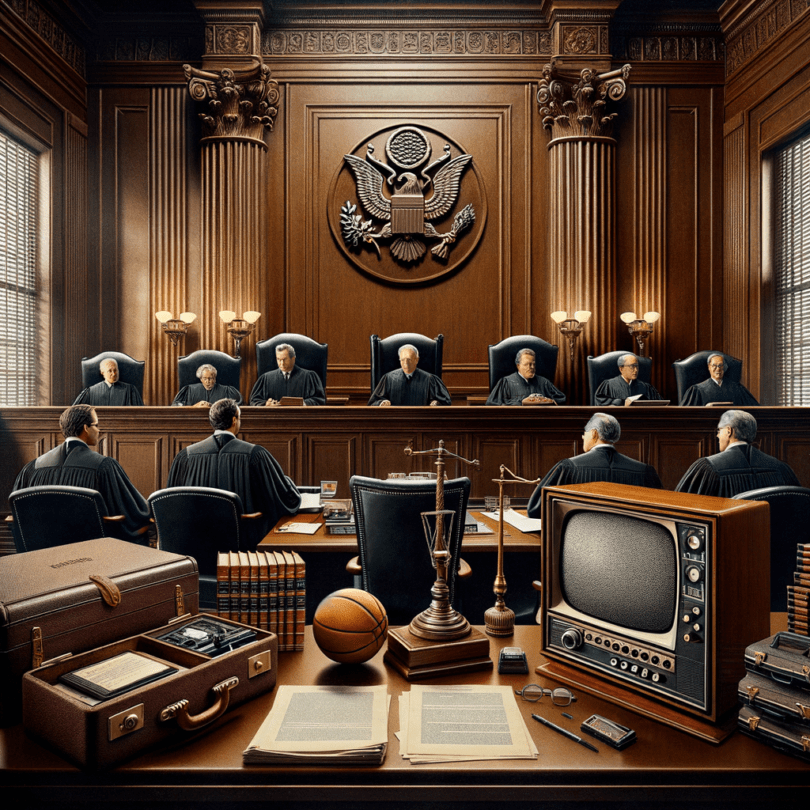It looks like the Pac-12 might be taking a final bow in the upcoming March Madness, as the shifting dynamics have nudged ten of its schools toward different conferences. But what exactly led this storied conference, rich with NCAA achievements, to unravel so swiftly? If we trace it back, we can arguably pinpoint part of this domino effect to a court case from decades ago.
Way back in 1984, as the NCAA was gearing up for its tournament’s regional basketball semifinals, a case made its way to the Supreme Court that would redefine college sports broadcasting in America. In the NCAA v. Board of Regents of the University of Oklahoma, the ruling blew open the doors for limitless college football broadcasts. Before this, the sport was capped at six nationally televised games every couple of years. The verdict shifted NCAA’s regional focus into a national spectacle, fueled by the lucrative television deals that came with football broadcasts. As someone who studies sports critically, I can’t help but see how that pivotal court decision has rippled through to today, directly affecting the Pac-12’s current predicament.
Broadcasting college sports isn’t a new concept. The 1930s saw television dabbling with it, and by 1939, the first college football game found its way onto TV screens. By 1950, schools like the University of Pennsylvania and Notre Dame scored regional air time for their games. That, however, changed big time in 1951 when the NCAA took the reins on television rights, initially even trying to nix live broadcasts altogether to protect game attendance. Institutions like Penn weren’t too keen on being reined in, but they backed down under pressure from the NCAA and its potential sanctions.
Eventually, NCAA eased up that same year, allowing sold-out games on TV, leading to the first national live sports broadcast featuring Duke and the University of Pittsburgh in September 1951. Fast forward a year, and the NCAA permitted one national game per week, and by 1953, NBC was invited to offer a regional “panorama” of games. Faced with pressure, the NCAA gradually allowed more regional games, striking a delicate balance throughout the season.
In those days, bowl games — such as the legendary Rose Bowl, which kicked off in 1902 — stayed outside the NCAA’s policy orbit. These television-drenched showcases proved to many university officials that airing college sports could be both profitable and a way to attract prospective students.
Fast forward to 1977, a growing frustration with restrictions on media coverage and revenues breathed life into the College Football Association (CFA). These universities were itching to challenge the NCAA over TV rights. It wasn’t long before the CFA began negotiating its own TV deal, setting the stage for a showdown as both the CFA and the NCAA entered talks with different networks. By 1981, the CFA struck a deal with NBC, prompting the NCAA to threaten sanctions, leading the University of Oklahoma and the University of Georgia to sue for control of their rights.
It’s wild to think all this happened decades ago. By the time the 90s rolled around, individual conferences called their independence from the CFA and negotiated directly for their lucrative media deals.
Beginning in 1987, changes allowed conferences with two divisions to have championship games, which didn’t count against their game limits, prompting these organizations to grab the reins on their media rights, leading to more financial gains. Networks and soon streaming services, poured massive amounts of money into the pot, with conferences like the Big Ten raking over $1 billion annually from media rights, a stark contrast from the $10 million benchmark they hit in 1996.
With such sums flowing in and new opportunities for athletes to profit from their name, image, and likeness since 2021, there’s increasing public scrutiny, with 67% of Americans questioning the NCAA’s relationship with colleges and student-athletes. Lawsuits challenge the notion of student-athletes as amateurs, especially as they increasingly resemble professional players bringing in big bucks.
Now, let’s connect the dots to the Pac-12’s struggles today. Just last year, the Big Ten shook things up with a deal promising its schools, including those jumping from the Pac-12 like USC and UCLA, up to $100 million annually. The Pac-12 tried to answer back by asking for $50 million per school annually in a deal with ESPN, only for the broadcaster to back off. The remaining proposal from Apple TV, a short-term one at $25 million per school, just didn’t make the cut, prompting other universities to seek greener pastures elsewhere for lucrative media contracts. And this is why the conference holding the most NCAA championships might not get another shot at the trophy in 2025.
Back in 1984, even though changes were anticipated, few could foresee this level of “madness.” The push and pull of college sports broadcasting is nowhere near its final chapter, and the revenue it brings will continue to rewrite the story of college athletics. In the tug-of-war between money and tradition, it seems the dollars are winning out, as the Pac-12 schools are prepared to walk away from a history spanning more than a century.

